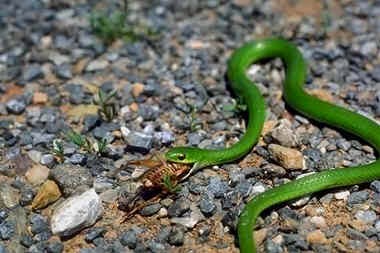Why do some snakes not have to chew their food
Why do some snakes not have to chew their food ?
The lower jaw bones also are not joined at the chin, allowing the mouth to spread wide open sideways. The snake can move each part of its jaw independently of the others, so it can hook its teeth into its food and 'walk' its mouth over the item, pulling it into its mouth. The stomach and skin are also stretchy to allow the ingestion of large food items, and the glottis can protrude from the mouth to allow breathing whilst the throat is blocked by swallowing.
In the case of the egg-eating snake, the whole egg is engulfed and drawn into the snake's throat. Here, downward-pointing projections of the vertebrae protrude into the throat, and these are used to pierce the egg-shell. The contents are squeezed out and swallowed, and the empty shell then regurgitated.
Snakes most certainly do have teeth - up to 300 in some species, arranged in six rows (two additional rows along the roof of the mouth). They are sharp and recurved to help them grip their prey, and venomous snakes obviously have fangs, large hollow teeth at the front of the mouth designed to inject venom into their prey. In elapids, such as cobras, the fangs are fixed, but in vipers and pit vipers, such as rattlesnakes, the fangs fold back against the roof of the mouth when at rest, and swing down when the snake bites.
Some colubrids are also known as 'back-fanged snakes', because they have enlarged teeth at the rear of the mouth that deliver venom, though they obviously have to get their prey quite far into the mouth before these can take effect. Snakes also don't have a 'second breathing hole' - their glottis is able to extend from the mouth, as mentioned above.



Comments
Post a Comment